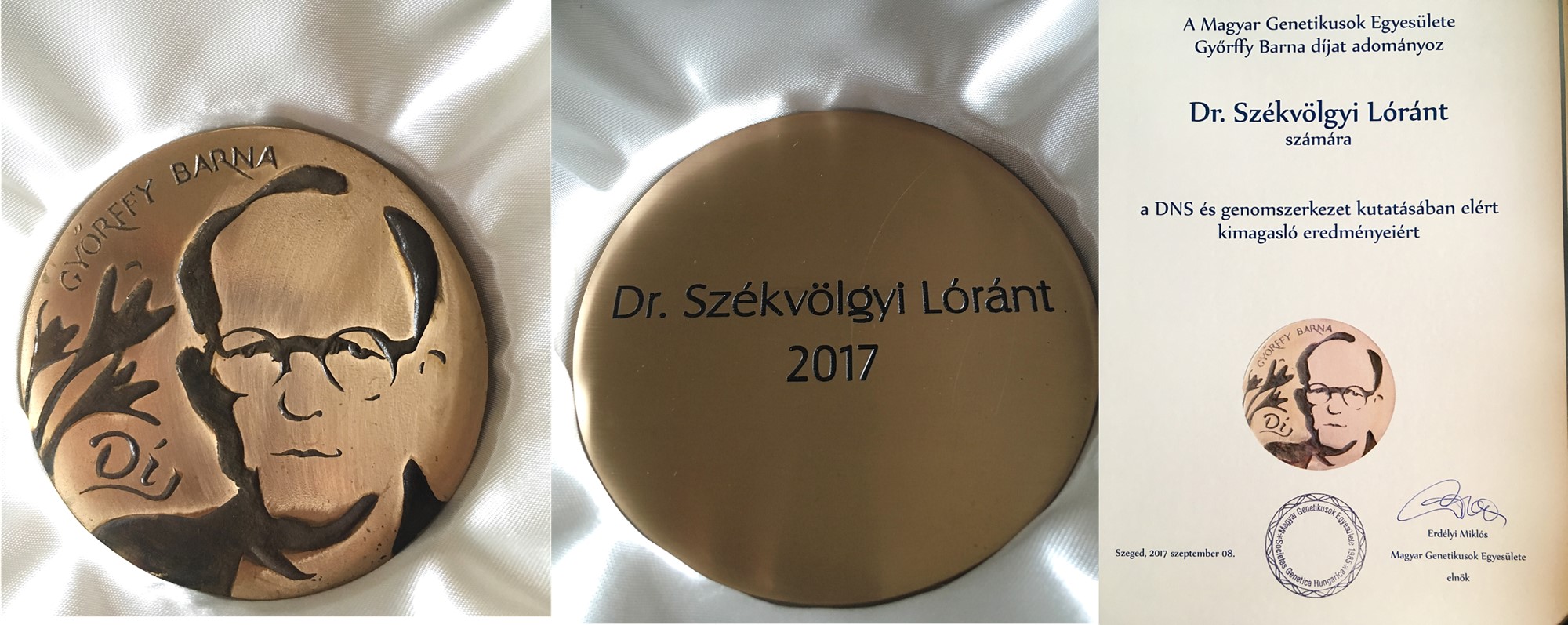Category: News
New publication in Nucleic Acid Research
New article has been published in Nucleic Acid Research:
Endogeneous single-strand DNA breaks at RNA polymerase II promoters in Saccharomyces cerevisiae
Éva Hegedüs, Endre Kókai, Péter Nánási, László Imre, László Halász, Rozenn Jossé, Zsuzsa Antunovics, Martin R Webb, Aziz El Hage, Yves Pommier, Lóránt Székvölgyi, Viktor Dombrádi, Gábor Szabó
Abstract. Molecular combing and gel electrophoretic studies revealed endogenous nicks with free 3′OH ends at ∼100 kb intervals in the genomic DNA (gDNA) of unperturbed and G1-synchronized Saccharomyces cerevisiae cells. Analysis of the distribution of endogenous nicks by Nick ChIP-chip indicated that these breaks accumulated at active RNA polymerase II (RNAP II) promoters, reminiscent of the promoter-proximal transient DNA breaks of higher eukaryotes. Similar periodicity of endogenous nicks was found within the ribosomal rDNA cluster, involving every ∼10th of the tandemly repeated 9.1 kb units of identical sequence. Nicks were mapped by Southern blotting to a few narrow regions within the affected units. Three of them were overlapping the RNAP II promoters, while the ARS-containing IGS2 region was spared of nicks. By using a highly sensitive reverse-Southwestern blot method to map free DNA ends with 3′OH, nicks were shown to be distinct from other known rDNA breaks and linked to the regulation of rDNA silencing. Nicks in rDNA and the rest of the genome were typically found at the ends of combed DNA molecules, occasionally together with R-loops, comprising a major pool of vulnerable sites that are connected with transcriptional regulation.
New publication in Journal of Cell Biology
New article by Zsolt Karányi et al. has been published in Journal of Cell Biology:
Nuclear dynamics of the Set1C subunit Spp1 prepares meiotic recombination sites for break formation
Zsolt Karányi, László Halász, Laurent Acquaviva, Dávid Jónás, Szabolcs Hetey, Beáta Boros-Oláh, Feng Peng, Doris Chen, Franz Klein, Vincent Géli, Lóránt Székvölgyi
Abstract. Spp1 is the H3K4me3 reader subunit of the Set1 complex (COMPASS/Set1C) that contributes to the mechanism by which meiotic DNA break sites are mechanistically selected. We previously proposed a model in which Spp1 interacts with H3K4me3 and the chromosome axis protein Mer2 that leads to DSB formation. Here we show that spatial interactions of Spp1 and Mer2 occur independently of Set1C. Spp1 exhibits dynamic chromatin binding features during meiosis, with many de novo appearing and disappearing binding sites. Spp1 chromatin binding dynamics depends on its PHD finger and Mer2-interacting domain and on modifiable histone residues (H3R2/K4). Remarkably, association of Spp1 with Mer2 axial sites reduces the effective turnover rate and diffusion coefficient of Spp1 upon chromatin binding, compared with other Set1C subunits. Our results indicate that “chromosomal turnover rate” is a major molecular determinant of Spp1 function in the framework of meiotic chromatin structure that prepares recombination initiation sites for break formation.
New article in Frontiers in Immunology
New article by Lilla Hornyák et al. has been accepted for publication in Frontiers in Immunology on 17/01/2018:
The role of indoleamine-2,3-dioxygenase (IDO) in cancer development, diagnostics, and therapy
Read More…
New article by Hetey Sz. et al.
New article by Hetey Sz et al. has been published in Biochemical and Biophysical Research Communications on 21/06/2017. Click here to read!

 D5 Creation
D5 Creation